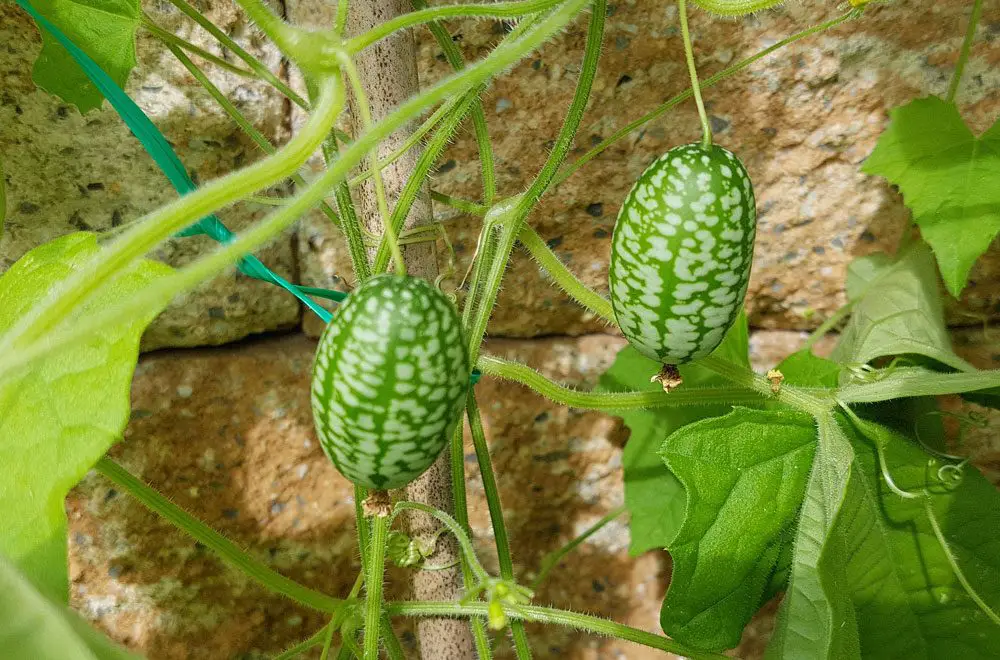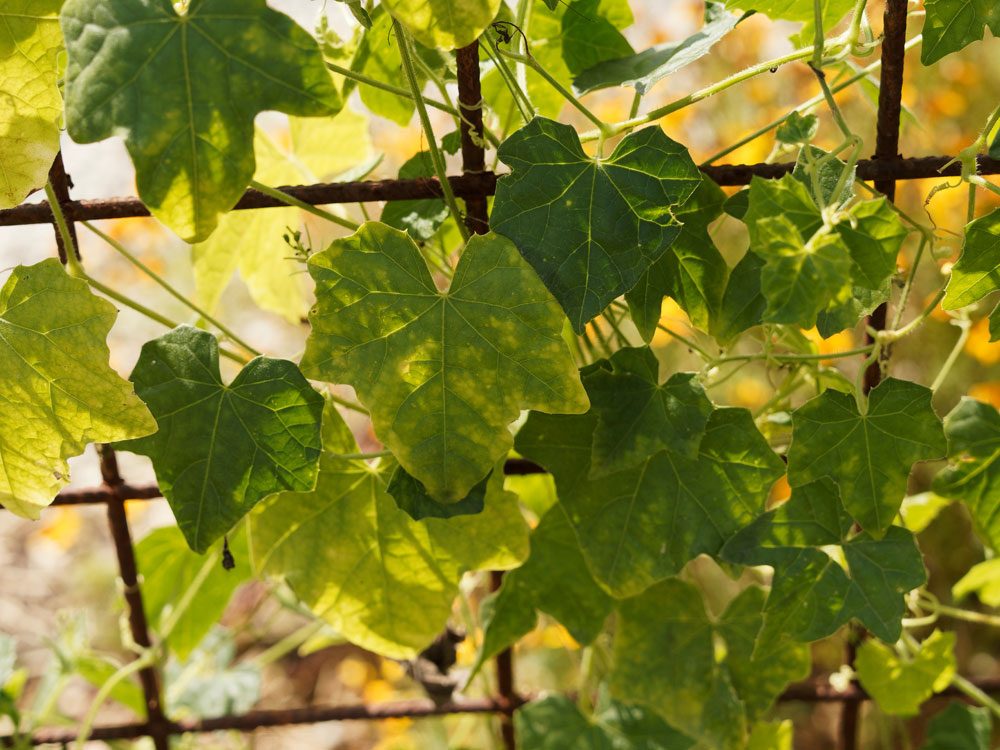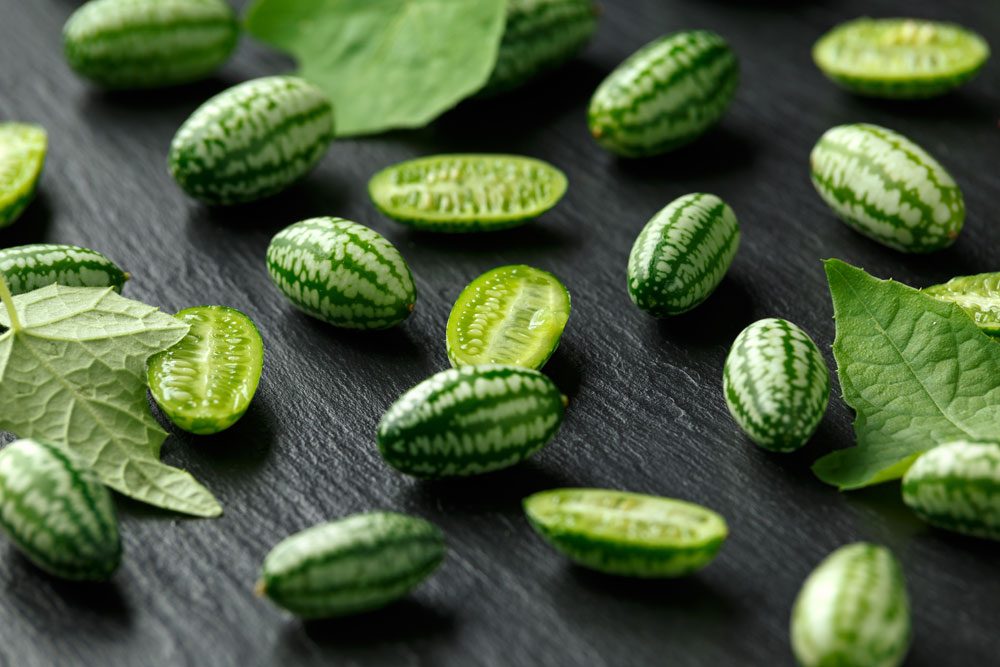
The Mexican mini cucumber is a small exotic in the vegetable garden. You can find out how to properly care for the climbing plant in this guide.
Its fruits look like small melons and yet the Mexican mini cucumber belongs to the pumpkin family. Her name is correspondingly misleading. Nevertheless, it is one of the easiest plants to cultivate and is becoming a popular snack plant in the home garden.
In Latin, the Mexican mini cucumber is called “Melothria scabra”. As you can assume from the name, it originally comes from Mexico, but it is becoming more and more common in home gardens here too.
The climbing plant is undemanding, grows perennial and grows up to two and a half meters high. When it comes to caring for it, it turns out to be largely uncomplicated and very productive as long as it gets the right help.
The melon-like fruits can finally be harvested between July and October, but their taste is more reminiscent of cucumbers .
Contents [ show ]
Mexican mini cucumber – small profile
| Mexican mini cucumber (Melothria scabra) | |
|---|---|
| Family: | Cucurbitaceae |
| Wuchshöhe: | ca. 2,5 m |
| Growth habit: | Tendril-shaped climbing plant that grows upwards in a spiral shape |
| Location: | Sun to partial shade |
| Wintering: | possible with proper preparation |
Location and soil

The Mexican mini cucumber likes to be in the sun. But it also thrives in partial shade. At the same time, there should be nutrient-rich soil that is not too wet. It is advisable to add a little vegetable and tomato soil, which has the right conditions for productive growth.
Sowing and care
There is absolutely nothing wrong with putting the Mexican mini cucumber outdoors. However, due to the overwintering measures, it is recommended to place it in a pot as a young plant to make the necessary overwintering easier.
➔ Sowing
Suitable seeds are available from specialist retailers, which can be grown between the end of February and mid-March and germinate after 22 to 26 days. The young plant is then placed in the pot from mid-May, ideally after the Ice Saints .
We recommend:
| # | preview | Product | Evaluation | Price | |
|---|---|---|---|---|---|
| 1 | Mexican mini cucumber seeds – Melothria scabra -… | Currently no reviews | 1,99 € | To the shop |
As the height increases, the mini cucumber needs a climbing aid so that it can continue to grow without any problems. It is important that insects such as bees and bumblebees have free access to the plant, as this gives it a better chance of pollination.
➔ Care
No special care is necessary , but you should be careful when watering. The wetter the soil, the higher the risk of disease development. Therefore, the soil should generally only be moderately moist and rather dry. It cannot tolerate waterlogging. Fertilization is only carried out at the beginning, shortly after the young plant has been placed in the pot. After one or two doses, no further fertilization is necessary.
➔ Overwintering
As far as overwintering is concerned, this practically begins in the fall . At this time, the accumulated foliage around the plant should be removed. The storage roots are then dug up and placed in a container containing moist sand. In this condition, the Mexican mini cucumber can overwinter without any problems and can simply be placed back into a nutrient-rich substrate next year.
What is important when harvesting

After a certain time, the small melon-like fruits appear on the bush and should only be harvested when they have reached a size of two to four centimeters. In general, the smaller the fruit, the smaller the seeds inside are.
In the kitchen, the fruits can be used in salads, but they also taste great straight from the bush and have a fresh, sour taste. By the way, this also works well in braised vegetables.
Pests and diseases
The Mexican mini cucumber is not particularly susceptible to disease as long as it is properly hydrated. Otherwise it may rot or be affected by mildew .
Likewise, pests rarely settle on the plant. The Mexican bean beetle is particularly worth mentioning here. However, this only occurs extremely rarely in our latitudes and is therefore not a danger to the plant.
